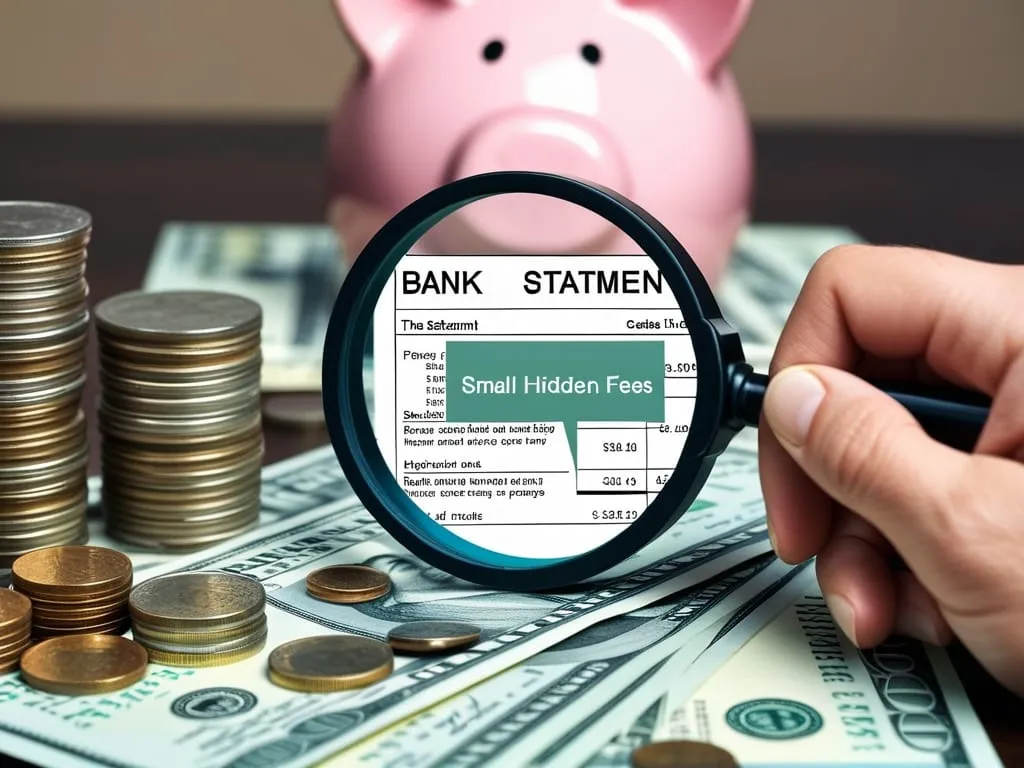In the everyday hustle of managing our finances, it's easy to overlook the subtle yet significant impact of hidden bank fees. These fees can sneak up on you, draining your account in ways that might seem insignificant at first but can add up over time. Let's follow the story of Alex, who one day stumbled upon a small, unexpected charge on their bank statement, and how this discovery led to a deeper exploration of the world of hidden bank fees.
The Discovery
It was just another ordinary day for Alex, sipping coffee and scrolling through the latest bank statement. But then, a tiny line caught their eye: a $5 fee for online access. At first, it seemed negligible, but as Alex delved deeper, they realized this was just the tip of the iceberg. There were monthly maintenance fees, overdraft fees, and even charges for transferring money between accounts. Each of these fees told a story of how banks generate revenue, often at the expense of their customers' unawareness.
The Monthly Maintenance Fee
One of the most common hidden fees is the monthly maintenance fee. Banks charge this to cover the costs of maintaining your account, which can range from $4 to $25 per month. For Alex, this fee was a surprise, especially since they had multiple accounts with the same bank. However, by linking their checking and savings accounts, Alex was able to avoid this fee altogether. This small adjustment not only saved money but also highlighted the importance of understanding the terms of your bank account.
The Overdraft Fee
Overdraft fees are another significant hidden cost. Imagine spending $200 when you only have $150 in your account. The bank covers the difference, but at a price – an overdraft fee that can range from $20 to $40. For Alex, setting up balance reminders and opting for overdraft protection services became crucial. However, it was important to note that even overdraft protection comes with its own set of fees, such as a $10 to $15 charge per transfer. This led Alex to be more mindful of their account balance and to explore accounts that offer no overdraft fees.
The Excessive Transaction Fee
In the United States, there's a federal limit on how many times you can withdraw from your savings account each month. The first six withdrawals are free, but any transactions beyond that can cost you $3 to $25 each. Alex realized that keeping track of these transactions was essential to avoid these fees. It also made them think about the best ways to manage their savings, ensuring they weren't unnecessarily withdrawing funds.
The Foreign Transaction Fee
For those who travel or shop internationally, foreign transaction fees can be a significant hidden cost. These fees range from 1% to 3% of the transaction amount and can be even higher for ATM withdrawals. Alex learned that using a debit or credit card that doesn't charge foreign transaction fees was a smart move. Additionally, taking out sufficient cash in advance, while being cautious about carrying too much cash, helped avoid these fees.
The Inactivity Fee
Some banks charge an inactivity fee if your account remains dormant for a certain period, typically between six months and a year. This fee can range from $5 to $20 per month. Alex realized that setting up automatic payments or transfers to infrequently used accounts could prevent these fees. If an account was no longer needed, closing it was the best option to avoid ongoing charges.
The Paper Statement Fee
In today's digital age, it's surprising that some banks still charge for paper statements. This fee, often disguised as a "remote banking fee," can be avoided by opting for digital statements. Alex found that receiving statements online not only saved money but also reduced clutter and made it easier to keep track of financial records.
The Early Closure Fee
Closing a bank account too soon after opening it can result in an early closure fee, which can range from $10 to $50. Alex learned to research and compare multiple accounts before opening one, ensuring they wouldn't need to close it soon after. This also highlighted the importance of understanding the terms and conditions of any new account.
The Account Research Fee
If you need to request copies of past statements or investigate a transaction, you might be charged an account research fee. This fee can range from $20 to $50 per hour of research. To avoid this, Alex started keeping digital copies of statements and regularly monitoring their account to quickly detect any unusual transactions.
The Returned Item Fee
If you write a check that bounces or have a direct deposit returned due to insufficient funds, you may be charged a returned item fee. This fee can range from $25 to $40 per item. Alex made sure to regularly check their account balance and set up low-balance alerts to avoid this fee.
The Broader Implications
As Alex delved deeper into the world of hidden bank fees, they began to see the broader implications. These fees are not just about the money; they are about transparency and trust in financial institutions. The Consumer Financial Protection Bureau (CFPB) has been actively working to protect consumers from illegal junk fees, highlighting the need for greater transparency in banking practices.
A Call for Transparency
The story of Alex's journey through the labyrinth of hidden bank fees is a common one. It underscores the need for consumers to be vigilant and for banks to be transparent. By understanding these fees and taking steps to avoid them, consumers can save money and build trust in their financial institutions.
Personal Touches and Practical Tips
For Alex, this journey was not just about saving money but also about gaining a deeper understanding of their financial habits. Here are some practical tips that Alex learned along the way:
- Read the Fine Print: Always read the terms and conditions of your bank account. Understanding the fees associated with your account can help you avoid surprises.
- Set Up Alerts: Setting up low-balance alerts and transaction notifications can help you stay on top of your account activity.
- Choose the Right Account: Research and compare different bank accounts to find one that aligns with your financial needs and minimizes unnecessary fees.
- Go Digital: Opting for digital statements and online banking can save you money and reduce clutter.
- Negotiate: If you're facing unexpected fees, don't hesitate to contact your bank. Sometimes, they may waive the fees, especially if you have a long-standing relationship with them.
The Dance Between Convenience and Oversight
Hidden bank fees represent a delicate dance between the convenience offered by banks and the oversight required by consumers. While banks provide essential services that make our financial lives easier, it is our responsibility to be aware of the costs associated with these services.
As Alex's story illustrates, uncovering these hidden fees is not just about saving money; it's about understanding the intricate web of financial transactions and making informed decisions. By being more mindful of these fees, we can better manage our finances, build trust in our financial institutions, and ensure that the convenience of banking does not come at an unexpected cost.
In the end, it's a tale of empowerment – a reminder that in the complex world of finance, knowledge is power. By shedding light on these hidden fees, we can navigate our financial lives with greater clarity and confidence, ensuring that every transaction tells a story of wisdom and financial well-being.






